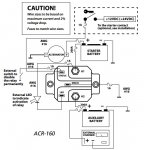toyotech
Expedition Leader
Sorry, was in a bit of a hurry on that last answer and totally muffed the other questions.
Sure you can add a switch. One of evldave's later graphics shows how. You're best bet is to wire it to ignition so it works automatically is you don't forget it, and then also add a switch that you can use to feed power to the solenoid when the ignition is off but you want to tie the batteries.
Yes you can use the frame for the ground. It's not optimal, but it will work. Might contribute to radio noise so if you're a radio guy, you might not like it.
Thank you. Good idea on the switch / ignition. I'll try the frame and if there is noise. I'll run another wire...
Sent from my iPhone using Tapatalk



